PHOTO
|
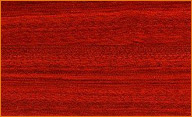 |
| DESCRIPTION | Bloodwood
heartwood varies from gray-red to a deep rich red. Grain varies from
straight to variable. It's texture is fine and smooth. The wood is
lustrous and sometimes has variegated yellow and red stripes. Weight is about 63lbs per cu. ft. Typical Width = 4" to 10" Typical Length = 4' to 12' |
| COUNTRY OF ORIGIN |
South America (Venezuela, Peru, Panama, Brazil) |
| BOTANICAL NAME | Brosimum rubescens |
| OTHER NAMES | Muirapiranga, Satiné, Rubane, Cardinal Wood |
| MECHANICAL PROPERTIES | High bending and crushing strength. Medium stiffness and resistance to shock, but tends to splinter. Low steam bending characteristics. |
| WORKING PROPERTIES | Although hard and tough, it works easily with hand and power tools. May need pre-drilling for nailing. Holds screws well. Glues, stains and polishes to a very good finish. Use Gorilla glue or epoxy for best results. |
| DURABILITY | Durable and very resistant to preservative treatment. |
| SEASONING | Dries slowly without much degradation. Small movement. |
| USES | Cabinet making, furniture, decorative inlay, marquetry work, fancy boxes, turning, veneers. |
| COMMENTS | Bloodwood ages to a deep brown color. Lacquer or water based finishes extends aging to help preserve red color. |
http://www.ibcperu.org/doc/isis/14887.pdf
=============================
http://www.wood-database.com/lumber-identification/hardwoods/bloodwood
 |
Common Name(s): Bloodwood, Satine
Scientific Name: Brosimum rubescens (syn. B. paraense) Distribution: Tropical South America Tree Size: 80-150 ft (25-45 m) tall, 4-7 ft (120-210 m) trunk diameter Average Dried Weight: 75 lbs/ft3 (1,195 kg/m3) Basic Specific Gravity: .95 Hardness: 3,635 lbf (16,170 N)* *Estimated hardness based on specific gravity Rupture Strength: 21,600 lbf/in2 (148,900 kPa) Elastic Strength: 2,360,000 lbf/in2 (16,300 MPa)
Crushing Strength: 13,340 lbf/in2 (92.0 MPa)
Shrinkage: Radial: 4.6%, Tangential: 7.3%, Volumetric: 11%, T/R Ratio: 1.6 |
Color/Appearance: A bright, vivid red. Color can darken to a darker brownish red over time with exposure to light and air. Applying a thick protective finish, and keeping the wood out of direct sunlight can help minimize this color shift.
Grain/Pore: Has a fine texture with small pores. Grain is usually straight or slightly wavy.
Endgrain: Diffuse-porous; small-medium pores in no specific arrangement; solitary and radial multiples of 2-3; tyloses and other mineral deposits common; growth rings indistinct; rays visible without lens; parenchyma aliform (winged), confluent, and in short tangential bands.
Durability: Reported to be very durable, and resistant to most insect attack as well.
Workability: Bloodwood is extremely dense, and has a pronounced blunting effect on cutters; beyond that, it turns, finishes and glues well. The wood tends to be brittle and can splinter easily while being worked.
Scent: Has a mild scent when being worked.
Safety: The wood’s dust has been reported as occasionally causing effects such as thirst and salivation, as well as nausea. See the articles Wood Allergies and Toxicity and Wood Dust Safety for more information.
Price/Availability: Though it is considered an exotic tropical hardwood, Bloodwood’s price is fairly moderate. It should be cheaper than most rosewoods, but cost slightly more than other colorful imports like Padauk or Purpleheart.
Comments: It’s no wonder that Bloodwood has grown so popular as an imported wood species, as it is exceptionally hard, durable, strong, and beautiful. It is used for both trim and accents, as well as larger structural elements in furniture, etc.
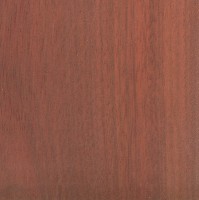
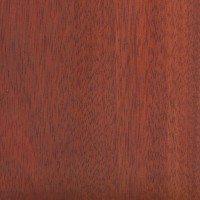
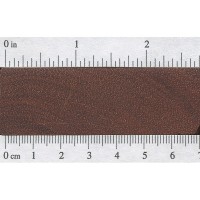
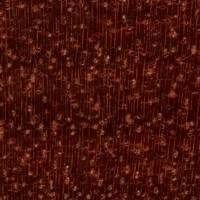
No comments:
Post a Comment